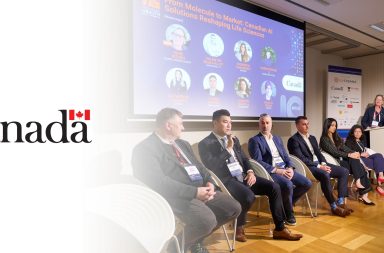Global progress in reducing maternal mortality and improving health outcomes for people who give birth has been disappointingly slow. To address this pressing issue, researchers are turning to innovative technologies, such as digital twins, to model and understand the complexity of the human body and its physiological changes during pregnancy. In a recent article published in The Lancet, the potential of digital twins in predicting and preventing pregnancy complications is explored, offering a glimmer of hope for improved maternal care.
Digital twins are virtual representations of real individuals that integrate computational models with real-time data. While the concept of digital twins is still in its early stages, computational models of organs, such as the heart and pancreas, have already found their way into clinical practice. The extension of this approach to pregnancy—creating virtual pregnancies—holds immense promise for understanding and addressing the specific risk factors that contribute to poor maternal health outcomes.
One challenge in studying pregnancy is the inherent complexity of the system and the significant differences between human and animal reproductive anatomy. However, advancements in cloud-based computing, artificial intelligence (AI), and the internet of things (IoT) have paved the way for exploring the potential of digital twins in pregnancy research. By leveraging patient-specific computational models, researchers can conduct virtual experiments that would be impossible or ethically challenging to perform in humans.
The article highlights three specific examples of patient-specific computational models simulating the interface between birthing parents and fetuses. One area of focus is the use of finite element models to study the cervix and uterus, aiming to identify new biomarkers for predicting preterm birth. By estimating the stretch of the cervix using patient-specific anatomical data derived from medical imaging, these models offer insight into the deformation associated with preterm birth. This knowledge could ultimately lead to proactive interventions and prevention strategies.
Another application involves using patient-specific models to understand how previous cesarean sections influence tissue integrity and the risk of uterine rupture in subsequent pregnancies. Finite element models of the uterus with caesarean section scars have revealed increased stress in vertical scars compared to transverse scars. Such findings align with clinical data and could aid in surgical planning, potentially reducing unnecessary repeat cesarean sections and the risk of uterine rupture.
Additionally, modeling blood flow and nutrient transport in the placenta provides valuable insights into factors driving placental insufficiency, a major contributor to conditions like pre-eclampsia and fetal growth restriction. Microvascular shear stress, determined through placental vascular network models, has been associated with impaired angiogenesis in fetal growth restriction cases. Combining patient-specific geometry with Doppler measurements and other data could enable comprehensive placenta models capable of predicting pregnancy complications and guiding effective pharmaceutical interventions.
However, there are obstacles to overcome before digital pregnancies can be implemented clinically. Acquiring imaging data to represent a patient’s anatomy over time and running computationally expensive finite element models throughout pregnancy pose challenges. Addressing these obstacles may involve developing growth and remodeling models that incorporate cellular and tissue adaptations, as well as integrating transcriptomic and proteomic data to understand underlying cellular pathways. Machine learning and statistical models will also play a crucial role in predicting outcomes and relationships to reduce computational time and data storage issues.
The groundbreaking passage of the US Food and Drug Administration Modernization Act 2.0, which allows for alternative testing approaches, including in silico modeling, further supports the potential of digital pregnancies. This regulatory shift acknowledges the need to consider the dynamic changes in the birthing parent’s tissues, the placenta, fetal membranes, and the fetus. Interdisciplinary collaboration between statisticians, engineers, computer scientists, and clinicians will be key to advancing the development of digital pregnancies and ultimately transforming clinical care.
While digital twins for pregnancy are still in the early stages of development and face several challenges, including computational complexity and data integration, the potential for personalized pregnancy care and improved maternal health outcomes is promising. As researchers continue to advance the field, leveraging the power of digital twins may pave the way for proactive interventions, early detection of complications, and interventions tailored to individual patient needs. By harnessing the potential of digital twins, we can strive towards a future where maternal care is highly personalized and optimized, leading to safer pregnancies and healthier outcomes for birthing parents and their babies.



